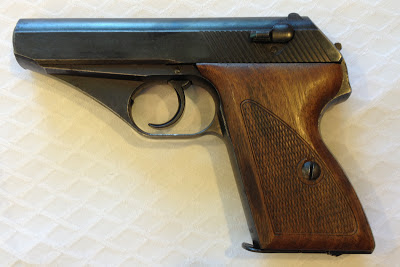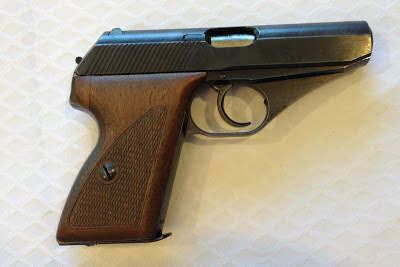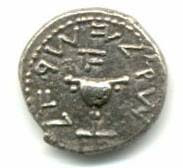The HSc stands for Hahn Selbstspanner Pistole "Self-Cocking Hammer Pistol" version c.


The external view of the pistol is that of a sleek, Art Deco design that points very naturally in the hand.
It was designed with a double action first shot with all subsequent rounds single action. The low profile hammer can also be manually retracted to make the pistol single action on the first shot as well.
Chambered in 7.65 Browning (.32 ACP), the eight-round blowback operation pistol was used by the German Navy, Army, and Police. Many commercial models were privately purchased by officers who were not issued pistols.
During the 251,988 of these pistols were made from December 1940 to the capture of the Mauser Oberndorf factory by the US Army in April 1945. Distribution of the pistols was as follows:
- Army (Heer): 137,121 (54.4%)
- Navy (Kriegsmarine): 27,100 (10.8%)
- Police (Polizei): 28,300 (11.2%)
- Commercial (Civil): 59,467 (23.6%)
This one was manufactured in 1943, it is a wartime commercial production HSc without any waffenamts. It only has the Eagle N proof mark on the trigger guard. The trigger is quite smooth in both double and single action and it fits in the hand points very naturally, lining up with your target when raised from your side to the level of your eyes. The sights are small as was the fashion of pistol sights of the era but seem to suffice for what is a close-range defensive pistol. The pistol has very nice lines that just make it look good.
It has quite a few interesting design features, many of which were to get around Walther's patents on the PPK:
The slide automatically slams forward when a magazine is inserted, and it locks open on the last round. The slide also locks open even if the magazine is not inserted. There is no slide release lever and it will not fire with the magazine removed. The safety does not impose block between the hammer and firing pin but instead swings the firing pin away from the hammer. The magazine release, as typically seen on European pistols is located on the rear of the butt of the pistol. It's a very smooth and snag-free design, with only the safety level protruding from the slide.
Unfortunately, there's a quite complete drought of .32 ACP around here and as such I haven't been able to try shooting it.
A nice collectable and rather attractive-looking piece of World War 2 history.

3 comments:
VERY nice indeed. Looking forward to seeing it first hand.
Oooo...Looks nice! I love Art Deco.
@ Proud Hillbilly: Didn't you used to date him?
Post a Comment